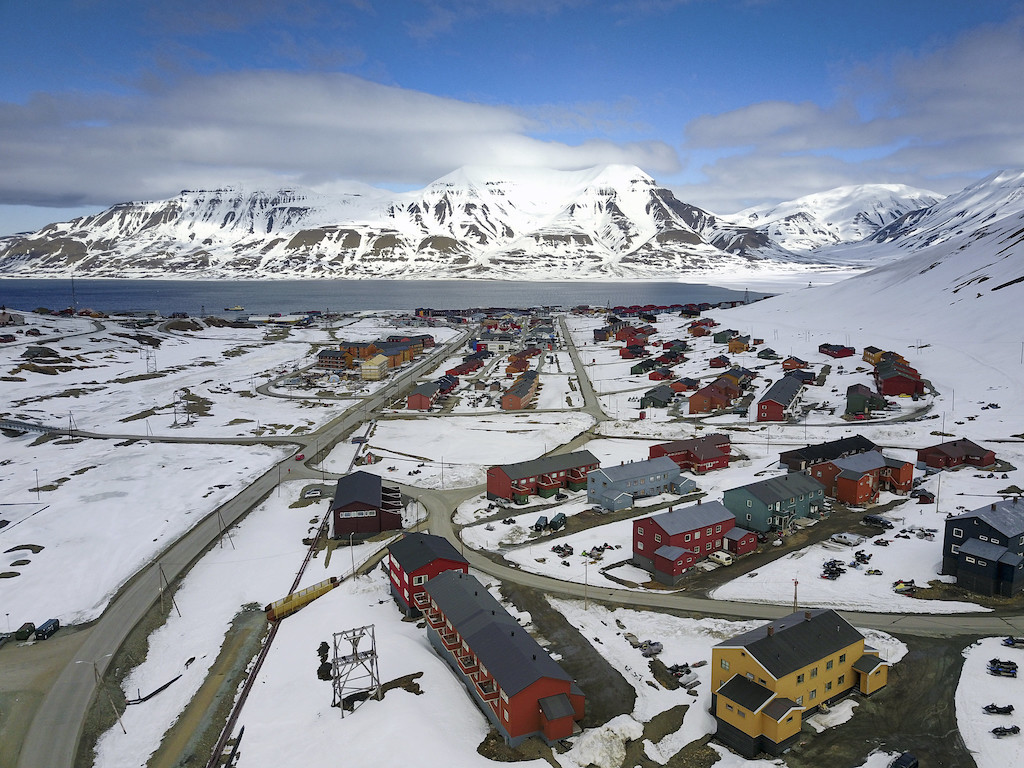Geothermal could replace coal on arctic island group of Svalbard
Group of Norwegian scientists and Geothermal Energy Nordic (GTML) are exploring a potential geothermal project to power and heat Longyearbyen on Svalbard in the Arctic.
A pilot project will investigate whether the new high school in Longyearbyen on the Norwegian Arctic island group of Svalbard can be heated by deep geothermal heat, as reported by Norwegian GeoForskning. If the project proves profitable, Svalbard can eventually get more geothermal wells. Currently energy and heat is provided by the coal plant at Longyearbyen.
If a geothermal well under the new folk high school building turns out to be profitable, the first well can start next year. Then we will look at opportunities for more and deeper wells for Longyearbyen, said Malte Jochmann, senior geologist at Store Norske and PhD candidate at the University Center on Svalbard (UNIS) during the conference GeoEnergy 21 on 2 September 2021.
The pilot project was recently awarded NOK 800,000 (~USD 91k) by Enova and has a total budget of NOK 1.8 million (~USD 206k). Store Norske is conducting the study together with UNIS and Geothermal Energy Nordic (GTML).
According to Jochmann, the utilization of geothermal energy stands out as an advantageous energy source in Longyearbyen. It has already been decided that a new energy system for the city will be built.
Today, the town covers its heating and electricity needs for coal and diesel. Existing infrastructure for district heating already exists.
Good conditions
Longyearbyen is located at high latitudes and needs district heating all year round – even in summer. In winter, it is completely dark, which excludes solar energy. High energy prices (2.04 – 2.46 Norwegian kroner per kWh, this translate to around USD 0.23-0.28/ kWh) provide a lower threshold for profitability of geothermal energy.
The senior geologist further pointed out that the subsoil in Longyearbyen is well mapped and that the geothermal gradients (how quickly the temperature increases in depth) are relatively high – up to 44 degrees C per kilometer.
Permafrost, gas pockets and logistics challenges
But there are also a number of obstacles that the partners in the project must overcome.
Permafrost is one of these. The heat from a geothermal well can thaw the permafrost that fills up cracks in the sedimentary rocks. It can destabilize the area around the well and lead to collapse. This can be avoided by using active cooling around the casing in a borehole.
Two master’s students at the Department of Geosciences and Petroleum at NTNU will look at different possible insulation methods to prevent permafrost from thawing.
Other challenges in the sedimentary rocks, according to Jochmann, are the presence of gas pockets, negative pressure and faults.
In the pilot project, the partners have decided to avoid areas with karst, choose a closed system for water circulation and use an oil / gas drilling rig that has protection against blowouts if they should hit a gas pocket.
Other challenges are related to logistics, harsh conditions in the winter and a relatively small market (Longyearbyen has 2,400 inhabitants).
The project participants are investigating drilling down to about 2,000 meters. Here they expect to encounter temperatures of up to 80 degrees C. It is expected that the first well under the folk high school can be realized already next year or in 2023.
A larger system for the whole of Longyearbyen
They will then investigate the possibility of a larger geothermal system that could potentially provide heat to the entire Longyearbyen.
Then it may be relevant to drill down to a depth of 6,000 meters.
We also envisage that surplus heat in the summer can be used to produce electricity through a so-called organic rankine cycle (ORC).
Store Norske also wants to establish similar systems elsewhere in Svalbard and in the Arctic. We have estimated that there are about 1,500 small towns and research stations that are currently operated on fossil fuels where geothermal energy may be relevant, Malte Jochmann concluded.
Geoenergy 21 was organized by the Norwegian Center for Geothermal Energy Research (CGER, part of NORCE).
Source: GeoForskning


















